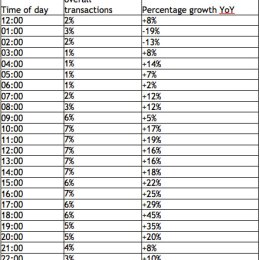We speak to Mark Chapman, Director of Tax Communications at H&R Block Australia.
Nobody wants to pay more tax that they have to and the key to minimising your taxes is to ensure that you claim all the tax deductions you’re entitled to. If you’re a beauty or dermal therapist, there’s a long list of potential tax claims that might apply to you. Not all of them will apply to everyone, but it will pay to spend a bit of time running your eyes down the below list to see which of them apply to you.
The Golden Rules of Tax Deductions
If you want to make a claim for work-related expenses, you need to follow the three golden rules:
- The expense must relate to your work
- You mustn’t have been reimbursed by your employer
- You must be able to prove that you spent the money. That means that you must keep receipts, invoices or statements to demonstrate that you actually incurred the expense.
H&R Block’s tip is to keep electronic copies of all documentation relating to expenses. Paper receipts get lost or fade, so keeping everything together on your phone or computer will save time and effort when you come to complete next year’s tax return.
Get Help
There’s a reason why nearly 70% of people use a tax agent to help them do their taxes. Tax is complicated and stressful and if you do it yourself, you’re likely to make a mistake. You might claim something you weren’t entitled to and find yourself audited by the ATO or you might miss out on a deduction you could have claimed but didn’t realise was available to you; the result is a lower refund than you could have got.

What are some typical deductions therapists may miss for those working in aesthetics when it comes to tax time?
Using your car
If you use your car as part of your work, for instance to travel to clients, between jobs, to expos or to collect supplies, you can claim the costs of your work-related journeys. If you use your own car, either claim 85 cents per kilometre up to a maximum 5,000 kms or keep a logbook and claim your actual expenses. You can also claim for parking, tolls and public transport if you don’t use your car.
You can’t claim the costs of traveling to and from work (the daily commute) though you might be able to make a claim if you’re required to transport bully equipment, which you can’t safely store at work (TIP: the ATO checks such claims closely so make sure you can prove your claim).
Equipment
You can claim the cost of buying tools and equipment that you use in your job or business. If the item costs $300 or less, you can claim it straight away and if the cost is more than $300, the cost is depreciated over several years.
If you’re in business on your own account, rather than being employed by someone else, you can immediately write off all items of equipment costing up to $20,000 per item (provided your turnover is less than $10m). This could include makeup brushes and applicators, waxing kits, mobile phones, laptops and bags or briefcases.
You can also claim the cost of insuring work-related equipment.
Clothing
If you’re required to wear a uniform at your workplace, the cost of purchasing the uniform is claimable and you can also claim for the cost of cleaning the uniform. Conventional clothing doesn’t count as a uniform so ideally any garment you claim for should have the business logo on it.
You can also claim for protective items such as gloves, aprons, hats or hair nets, goggles and non-slip shoes.
Protective equipment
If you are in an occupation that requires physical contact or proximity with customers or clients, like the beauty industry, you can claim a deduction for items such as:
- Gloves
- Face masks
- Sanitiser
- Antibacterial spray.
If you’re unlucky and think you have caught COVID-19, the cost of getting a test is tax deductible, where that test is for work-related purposes.
If you incur transport expenses to get to and from the site of a COVID-19 PCR test (or expenses in traveling to the chemist or supermarket to acquire an RAT), these will not be tax deductible as they are regarded as private expenses, even if the test is a condition of your employment.
Working from home
If you operate a beauty business from home, either occasionally or all the time, you are entitled to deductions for costs arising from working at home. The expenses that you can claim include:
- Heating, cooling and lighting
- Cleaning costs
- Decline in value (depreciation) of home office furniture and fittings, office equipment and computers (for items over $300)
- Computer consumables, stationery, telephone and internet costs
- Items of capital equipment (such as furniture, computers and associated hardware and software) which cost less than $300 can be written off in full immediately
With many retailers running End of Financial Year specials, any purchases you make now can be deducted in this year’s tax return so from a cash flow point of view, you can minimise the time between purchase and tax deduction!
Don’t forget if you are claiming the ATO’s 67 cents per hour fixed rate deduction for working for home, you must have a complete record of all your hours worked from home from 1 July 2023 (eg, a diary, timesheets or rosters).
If you run your own business from home, you can also claim occupancy expenses. These include the work-related portions of expenses such as mortgage interest (if you’re a home-owner) and rent (if you’re a tenant), as well as rates and home insurance. Remember, if you own your home and claim expenses such as these, you’ll lose the Capital Gain Tax main residence exemption on the same proportion of your home that you’ve claimed expenses for.
What education can be claimed by therapists if they’re working in the industry whilst studying?
You can claim the cost of any work-related courses that you undertake, provided that they relate directly to your current role and aren’t intended to boost your skills into a promotion or another role entirely. That could include courses on makeup techniques, massage and nails. It could also include management training if you supervise staff.
Courses run by a university or TAFE such as Cert IV in Beauty Therapy or Diploma in Salon Management could also be relevant. In addition to the cost of the course, you can claim travel costs to and from the course, accommodation and meals if you’re required to sleep away from home, books, stationery and depreciation on computer equipment used in your study.
What are some deductions that are commonly forgotten about that are claimable?
Don’t forget to claim these costs if they are relevant to you:
- Claim for professional subscriptions, whether to a professional body or to a trade union.
- The cost of work-related magazines and journals (so if you haven’t subscribed to SPA+CLINIC yet, now is the time! Subscribe here.)
- The cost of work-related books (for instance, books focussing on styling, colour, beauty, or management)
- If you’re required to work overtime, you can claim for the cost of buying meals provided you have been paid an allowance by your employer.
- Agency costs: if you get your work through an agency, the cost is claimable.
- The cost of using a tax agent is itself tax deductible, including costs incurred in travelling to see the tax agent.
- If you use your mobile phone for work purposes, you can claim a proportion of both the cost of the phone and the monthly bill, to the extent that the costs relate to work or business.
- If you attend exhibitions, competitions or other events in a professional capacity, the costs are claimable.
- You can claim for the cost of handbags and other work-related bags provided they are used for work purposes, eg to carry a laptop, work papers or samples. You might have to apportion the cost if the bag is also used outside work.
Read the latest issue of SPA+CLINIC below:
There are 5 ways you can catch up with SPA+CLINIC
- Our quarterly print magazine, delivered to your door. Subscribe here.
- Our website, which is updated daily with its own completely unique content and breaking news.
- Our weekly newsletter – free to your inbox! Subscribe here.
- Our digital magazine – click here to view previous issues.
- Our social media – see daily updates on our Instagram, Facebook & Linkedin




